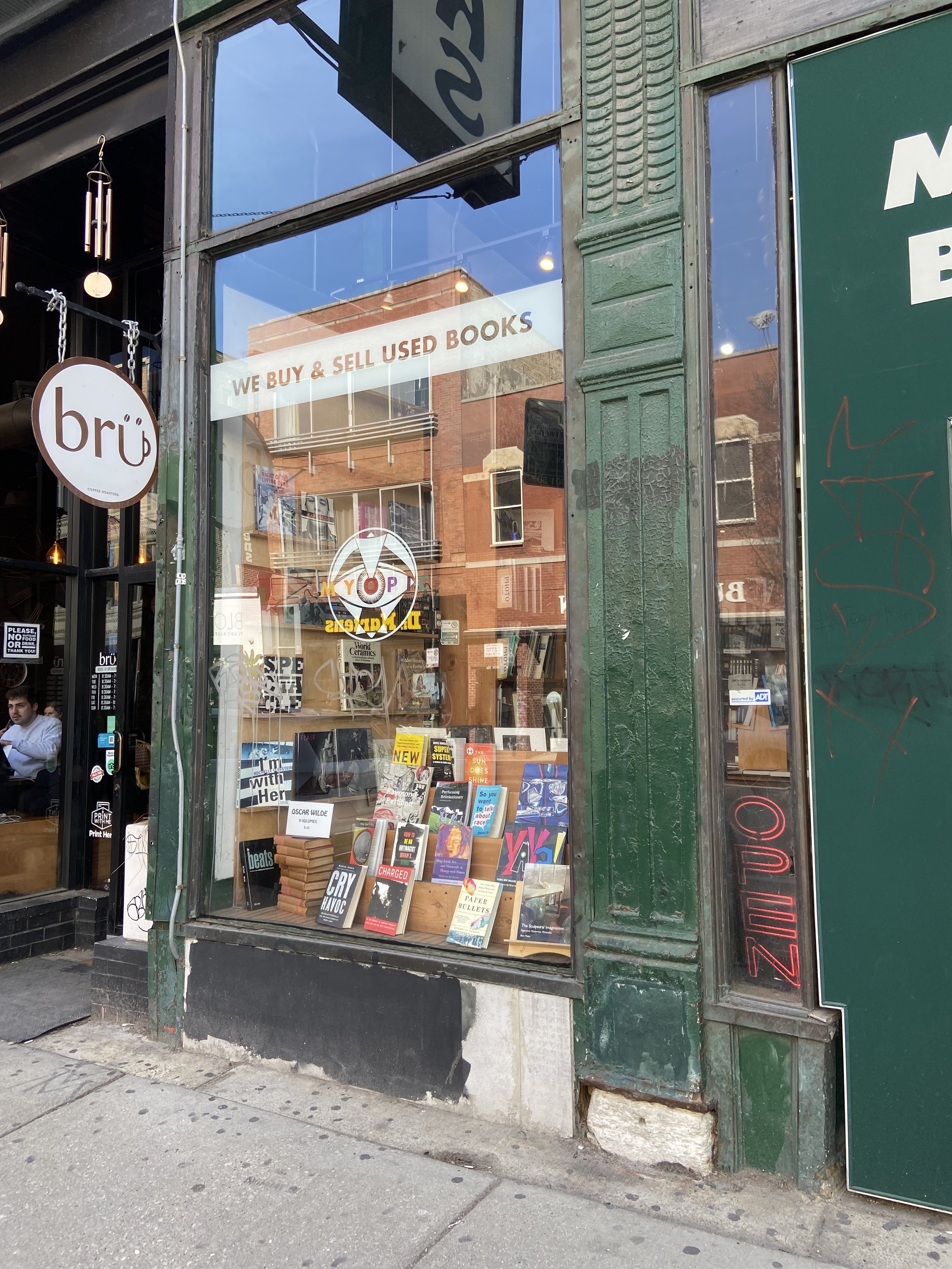Literary Tourism: Myopic Bookstore in Chicago
Did I mention that Harmony and I went to 5 bookstores in less than a week when I visited them in Chicago? Honestly, I’m just surprised it wasn’t more.
Anyhoo, we went to Myopic Books! A lovely––and MASSIVE––used bookstore that is coincidentally almost across the street from Quimby’s.
[image description: The outside of Myopic Books, which includes their large picture window and vertical hanging sign.]
Myopic is three stories of all kinds of used books––everything from previously read copies of books out in the past year or two to vintage and antique volumes.
[image description: another view of the storefront of Myopic Books. Various books are displayed in the window in roughly a pyramid shape.]
While they didn’t have a ton of books from the mid- to late 1800s, which is my vintage book collecting era of interest, I did get a rare, out-of-print book about Palestinian resistance published in 1972.
I also got a more modern book called Promised Land: Thirteen Books that Changed America by Jay Parini.
[image description: a photo of the front door of Myopic, which is painted forest green.]
I know what you’re thinking: This is the third photo I’ve shown of the outside of the store. Hurry up and get on with it!
I get that, but there’s just one problem, and my only complaint about Myopic: There are signs EVERYWHERE that say no photos.
I know why stores, particular bookstores do this. Some jerks will come in, find something they like, and instead of just buying it there like a decent human being, they’ll go online and buy it somewhere else for cheaper, probably Amazon. It’s especially shitty to do this with books because 1) indie bookstores are cultural fixtures and intellectual community centers in their neighborhoods and cities, and 2) book prices are fixed, as evidenced by the fact that the price is stamped on the cover, so bookstores’ margins are limited.
At a used bookstore, it may seem like the shop can just charge whatever they want, but when there’s so much market competition, it’s best to just trust that the store has priced the book according to what it’s actually worth.
While I understand bookstores’ fears about photography, I think it should be on a case-by-case basis. Bookstagram, BookTube, and BookTok are all huge, so having visitors be able to capture their experience in a bookstore can make for a big marketing boost by encouraging others to visit. That’s what I do on this blog with my Literary Tourism posts and for a moment, seeing all those “no photography” signs made me not want to write a post on Myopic. I ultimately decided to go ahead and write the post anyway, as un-photographically appealing as it might be, because it gives me a chance to talk about this issue.
Maybe I’d feel differently if I owned a brick-and-mortar shop, but I think it’s better to believe the best in your customers rather than the worst. Maybe I’m one of those annoying optimists, but I think it’s better to assume the best in people and assume good intentions, then deal with the ill-intentioned people on an as-it-happens basis.
It reminds me of when I was in school and the teacher would tell us not to talk in class. Inevitably, someone would, they always did, then instead of punishing that individual, she’d punish the whole class. At that point, what incentive did the rest of us have to behave? We were already being punished and someone was always going to screw up, so there was no point in being good.
Which is to say, I took another couple of pictures inside the building.
[image description: My best friend, Harmony Cox, who’s wearing a black leather jacket with embroidered red roses and a red beanie, holding a copy of the book Because He’s Jeff Goldblum, which Harmony’s twin sister Leigh did the art for.]
Harmony was especially excited to find a copy of Because He’s Jeff Goldblum because 1) he’s Jeff Goldblum and 2) their twin sister Leigh is an artist who illustrated Goldblum’s portrait on the cover of the book and did several more illustrations throughout.
[image description: an up-close look at the Myopic Books marquee, taken from the third floor window inside the buildiing.]
And I couldn’t resist a pic of the marquee sign from the third floor window. I just wish I could’ve shown you the massively tall bookshelves, the winding paths through the various floors of the store, the maze-like rows, and the huge bank vault doors that hint at what the building used to be. Ah well, you’ll have to go see for yourself.










